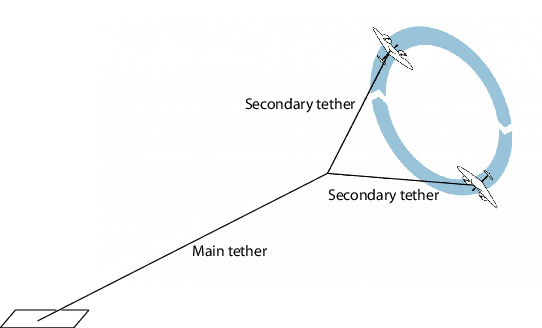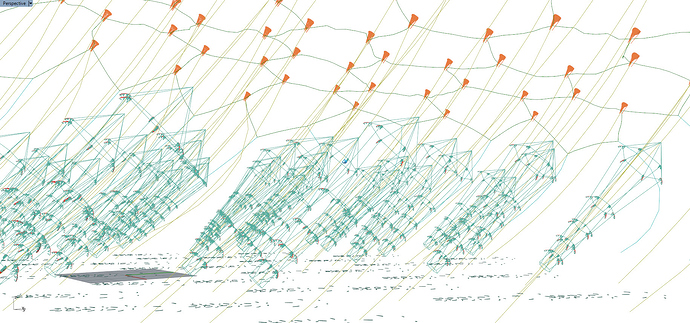These papers show the ever-widening gap between Roland and Moritz’s academic circle and the rest of the kite world, ever since Wubbo passed.
Multi-kites have a long history. In AWE, especially on the Old Forum, Kite Networks have long been a central study. Dr. Moore’s CSR seems to be the best early academic study of multi-kites rotating in the same plane, along with Rod’s Daisy; both “MAWES” as defined in these papers, but neither cited under a persistent pattern of EU academic provincialism. Classic Kite Trains once again are not considered, although obviously “mutli-kite”. Also not mentioned are AWE LadderMills, Spider-Mills, or Lattices.
The impressive math models do not yet capture the wonderful formal chaos that top empirical multi-kite flyers observe, the cautious credentialed academics opting instead for idealization under simplified control theory. At some point the two worlds, real and ideal, must meet again.
Here’s real-world prior art-
29 Fighter Kites on one line in 2007. Note “Terry” mentioned in audio. I helped Terry McPherson set a later record of 39 fighter kites on one line, in 2009, at Long Beach, WA-
Here’s just two fighter kites on one line in 2007, with just enough “aggregate stability” to stay up passively-
These topologies descend from Eddy Trains (although Eddy did not invent them). Jim Patton is the modern KiteGod of the Eddy Train, which he independently re-invented(!) I got to fly a 500m high train of large kites in Ilwaco, WA with Jim, from my home away from Texas.
Those who have such unique MAWES kite experience and knowledge of kite history are not part of the EU academic circle dominating AWE conferences and government funding. Although this not the “proof” Pierre demands of an AWE community dis-connect (what Tallak calls a “conspiracy theory”), its rather good evidence.
The Old Forum remains the best single source of Kite Network discussion, including the CSR class.

